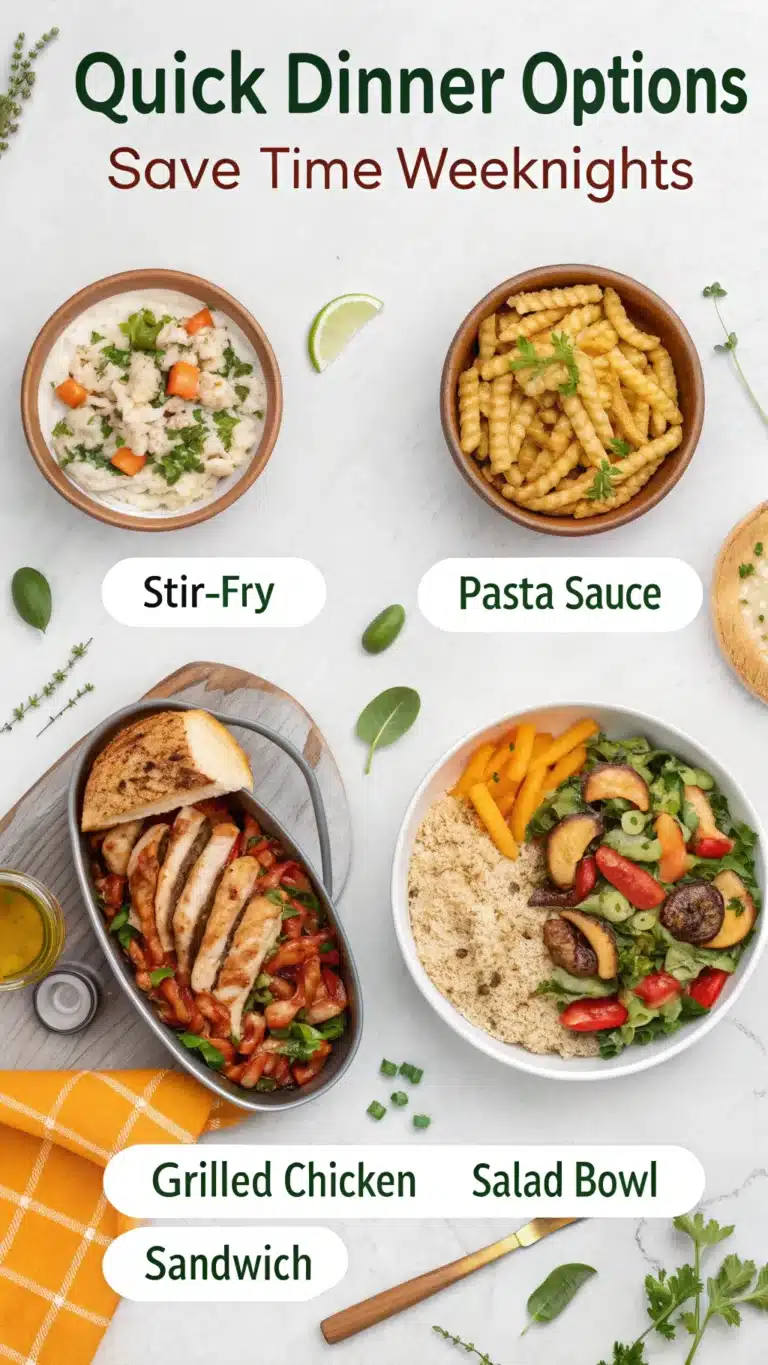Do your home-cooked meals truly shine? Sometimes, they just fall flat. Many cooks follow recipes carefully. Still, something feels missing. I have felt this frustration myself. The secret is not just technique. It is not only about ingredients. It is knowing how flavors work together. This knowledge changes everything.
Cooking often feels like guesswork. You might add spices randomly. Perhaps you hope for the best taste. I know that feeling very well. This guide offers a clear path. It is The Flavor Pairing Guide That Will Change the Way You Cook. This guide helps you cook better. You will gain true food understanding. Move past just following instructions. Cook with real confidence and joy.
I wrote this guide for you. It simplifies flavor pairing. It teaches the culinary science behind food. This will transform your cooking approach. You will create meals that taste amazing. Build them right from scratch. You can lift everyday dishes. These are powerful culinary tips I use. My own kitchen saw big changes.
We will explore basic tastes. Learn about ingredient synergy. I will show practical ways to use it. Expect real-world examples. We will also see future food trends. Get ready for fun kitchen experiments. These are smart cooking hacks for everyone. Your palate will thank you.
Main Sections
Section 2.1: The ABCs of Taste: Decoding Basic Flavor Profiles and Aromatics
Every great dish starts here. You must know the building blocks. Understanding basic tastes is key. Aromatics also play a huge role. They create flavor.
The Five Pillars of Taste
Sweet
Sweetness balances other flavors. It can enhance a dish. It also provides comfort. I often use it for contrast. Think of sweet and savory pairings. Honey with cheese is delicious. Fruit with roasted meats works wonders.
Sour (Acid)
Sourness brightens food. It cuts through richness. It lifts other flavors. This is crucial for acid and fat balance. I always keep lemons handy. Vinegars also add great acidity. Fermented foods bring a tangy note.
Salty
Salt is a flavor enhancer. It brings out natural tastes. It does more than add saltiness. A pinch can make flavors pop. I use it to awaken ingredients. It makes everything sing.
Bitter
Bitter taste is often misunderstood. It adds complexity. It brings depth to food. You must learn to balance it. Coffee and dark chocolate are bitter. Certain greens, like radicchio, also are. They create sophisticated flavor combinations.
Umami
This is the savory “fifth taste.” It brings richness. It makes you crave more. Mushrooms are rich in umami taste. Aged cheese and soy sauce have it. Tomatoes also offer this depth. I use it for a satisfying finish.
The Power of Aromatics
Your sense of smell is vital. It contributes most to flavor. It is about 80% of what you taste. This is why aromatics matter.
Aromatic Compounds
Herbs and spices have key compounds. So do foundational vegetables. Garlic and onion are common. Ginger and celery also count. These create a base. They build the dish’s character.
Spice Blending & Herb Usage
Do not just add spices. Learn to layer them. Combine them for impact. This is true spice blending. Fresh herbs and spices add freshness. Dried ones give deep warmth. I always consider their interaction.
Actionable Tips
Taste ingredients alone first. Identify their dominant flavors. Add specific tastes intentionally. A lemon squeeze brightens rich dishes. A pinch of sugar balances sourness. My goal is always harmony.
Section 2.2: The Art of Ingredient Synergy: Principles of Food Pairing
Moving beyond single tastes is next. Ingredients combine. They create a harmonious whole. This is food pairing principles. Tools like a flavor wheel can help.
Complementary Pairings
Some ingredients just belong together. They share similar traits. Or they have historical ties. They naturally enhance each other. Tomato and basil are a classic example. Chocolate and raspberry work well. Beef and rosemary also combine perfectly. I often start with these natural fits.
Contrasting Pairings
This is where magic happens. Ingredients provide counterpoints. They create delightful tension. Salty with sweet is a favorite. Creamy with crunchy adds interest. Spicy with cooling creates balance. These smart flavor combinations excite the palate. My own cooking thrives on this play.
The Role of Texture
Texture is often forgotten. But it is very important. It shapes the eating experience. Texture in cooking impacts flavor. A dish needs variety. Think crunch, chew, creaminess. Crispness adds a lot. I always aim for diverse textures.
Regional & Cross-Cultural Pairings
Cuisines worldwide mastered this art. They perfected flavor combinations over time. Learning from them is smart. Consider classic cross-cultural pairings. Mediterranean flavors are balanced. Asian dishes use bold contrasts. Latin American food is vibrant. I find endless inspiration here.
Actionable Tips
Use a flavor wheel for ideas. It helps brainstorm new pairings. Look at classic combinations. Understand their core principles. Apply them to your own cooking. This is part of sensory cooking.
Section 2.3: Mastering Flavor Pairing: Practical Applications & Case Study
Now, let us use this knowledge. Apply it to everyday cooking. This bridges theory and practice. It helps with meal planning. It also fixes mistakes.
Building a Dish from Scratch
Do not just follow recipes. Start with flavor profiles. Think of a core ingredient. Build around it. Add complementary elements. Include contrasting notes. This boosts your cooking creativity. I often build a dish this way.
Elevating Everyday Meals
Simple changes transform dishes. You can make mundane meals shine. This is gourmet cooking at home. A splash of vinegar adds zing. Fresh herbs bring freshness. A pinch of chili flakes adds heat. These small additions elevate your dishes.
Smart Ingredient Substitution
Sometimes you miss an item. Use flavor principles for swaps. Make intelligent ingredient substitution. Ensure the dish stays balanced. Its intended profile must remain. I do this often in my kitchen.
Troubleshooting Dishes
What if a dish tastes “off”? Is it bland? Too rich? Too bitter? Apply flavor pairing principles. Correct the imbalances. Add acid for richness. Salt fixes blandness. Sweetness can balance bitterness. These are essential home cooking tips.
Case Study: Sarah’s Weeknight Culinary Transformation
Sarah felt stuck. She was a busy parent. Her meals were repetitive. They lacked excitement. She often ordered takeout. She dreaded blandness at home. She knew she had to cook more.
Sarah found The Flavor Pairing Guide That Will Change the Way You Cook. She decided to use it. She focused on intentional additions. She did not try complex new recipes.
First, she identified main flavors. For chicken and vegetables, she started simple. Roasting broccoli and carrots worked well. She added garlic powder for aromatic compounds. A drizzle of balsamic glaze added sweetness. It also gave sourness and umami taste. This greatly improved the taste.
For chicken, she changed her rub. She used smoked paprika for earthiness. A touch of brown sugar helped caramelize it. She learned to finish dishes. A squeeze of fresh lemon added brightness. Fresh parsley gave a pop of flavor. These small flavor combinations made a huge difference.
Sarah’s family noticed immediately. Meals were no longer just fuel. They became truly enjoyable. Sarah felt more confident. Her cooking creativity grew. She tried new recipe ideas. Takeout orders dropped a lot. This systematic approach became The Flavor Pairing Guide That Will Change The Way You Cook for her.
Section 2.4: Advanced Flavor Pairing & 2025 Trends
Let us push beyond traditional pairings. Explore new culinary ideas. These are emerging trends.
Molecular Gastronomy & Unexpected Pairings
Science explains unusual pairings. Chocolate and blue cheese work. Strawberry and black pepper are great. They share aromatic compounds. This is part of culinary science. It opens new possibilities. I enjoy these surprising combinations.
Mastering Plant-Based Pairings (2025 Trend)
Plant-based diets are growing. Building deep flavors is important. Do this without meat. Learn specific plant-based pairings. Elevate vegetables and legumes. Try alternative proteins. Roasted mushrooms with thyme are good. Smoked paprika with chickpeas works. Nutritional yeast adds umami taste.
Sustainable Sourcing & Flavor (2025 Trend)
Where food comes from matters. Seasonality impacts flavor. Ethical sourcing is important. Sustainable ingredients taste better. They enhance pairings naturally. Fresh and local is often best. I always seek out quality produce.
The Role of Smart Kitchen Gadgets (2025 Trend)
Technology helps achieve flavor. Sous vide offers precise heat. Smart ovens control humidity. These perfect base ingredients. They support culinary science. They lead to better flavor development. My kitchen uses these tools.
Actionable Tips
Try one “unusual” pairing this month. Explore global cuisines for new ideas. Consider an ingredient’s journey. From farm to plate, it impacts flavor. This encourages kitchen experiments. It sparks cooking creativity.
3. FAQs
What are the best flavor combinations for beginners to try?
Start with simple classics. Tomato and fresh basil work well. Garlic and butter are always great. Lemon and chicken are a perfect match. Apple and cinnamon also pair nicely. Focus on balancing tastes. Think sweet, sour, and salty. Do this in your simple dishes. This is a great cooking hack. It gives you new recipe ideas.
How can I tell if ingredients will pair well together without a recipe?
Taste each ingredient first. Notice its main flavors. Is it acidic, bitter, or sweet? Is it savory? Think about what complements it. Look for similar notes. Or find contrasting notes. They should still harmonize. Trust your own palate. Be open to kitchen experiments. This is true sensory cooking. It is a top culinary tip.
Does texture truly play a significant role in flavor pairing?
Yes, it absolutely does! Texture makes eating enjoyable. A dish can taste perfect. Yet it falls flat. This happens with monotonous textures. Aim for variety. Combine crunchy with creamy. Try soft with chewy. Crisp elements add interest. Texture in cooking is vital. It enhances sensory cooking.
Are there any flavor pairings I should avoid, or are all combinations possible?
“Avoid” is a strong word. Some flavors can clash. Too many bitter elements might overwhelm. This happens without balance. Stark contrasts might not harmonize. It is about balance. Proportion is also key. My goal is deliciousness. Learn from what does not work. This helps your cooking creativity. It is a good home cooking tip.
How quickly can I expect to see improvements in my cooking using this guide?
You will see fast improvements! Try it a few times. Apply one or two ideas. Do this for your next meal. You will immediately notice changes. You will elevate your dishes. You will cook with more confidence. The Flavor Pairing Guide That Will Change the Way You Cook truly works. It helps with quick meals.
I showed you a true secret today. Understanding flavor pairing changes everything. It is a top culinary tip. Cooking becomes an intuitive art.
I walked you through basic tastes. Then I moved to ingredient synergy. I also explored future food trends.
Applying The Flavor Pairing Guide That Will Change the Way You Cook helps you. You gain confidence. You feel more creative. Cooking brings great joy. You are not just following steps. You are orchestrating deliciousness.
Start your own flavor journey today. Try one new pairing this week. Revisit a favorite recipe. Look at its flavor balance. Share your kitchen experiments. Tell others your discoveries!
This is not a final destination. It is a lifelong journey. It is about cooking creativity. It is about delicious discovery. Keep tasting. Keep experimenting. Let your palate guide you.


